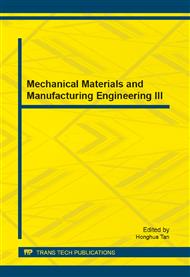p.580
p.585
p.593
p.598
p.604
p.609
p.615
p.619
p.625
An Improved Production Scheduling Algorithm Based on Resource Constraints
Abstract:
For resource-constrained project scheduling problems, with aircraft assembly as its background, we established its mathematics model as constraint satisfaction problem. An improved critical path scheduling algorithm is proposed, considering the constraints of precedence relations, resource constraints and space constraints, through the two stages of planning, reaching for aircraft assembly task scheduling optimization objectives. Through the given numerical example results show that, when the objective consists in minimizing the project duration, the algorithm has better performance.
Info:
Periodical:
Pages:
619-624
Citation:
Online since:
November 2013
Authors:
Keywords:
Price:
Сopyright:
© 2014 Trans Tech Publications Ltd. All Rights Reserved
Share:
Citation:


